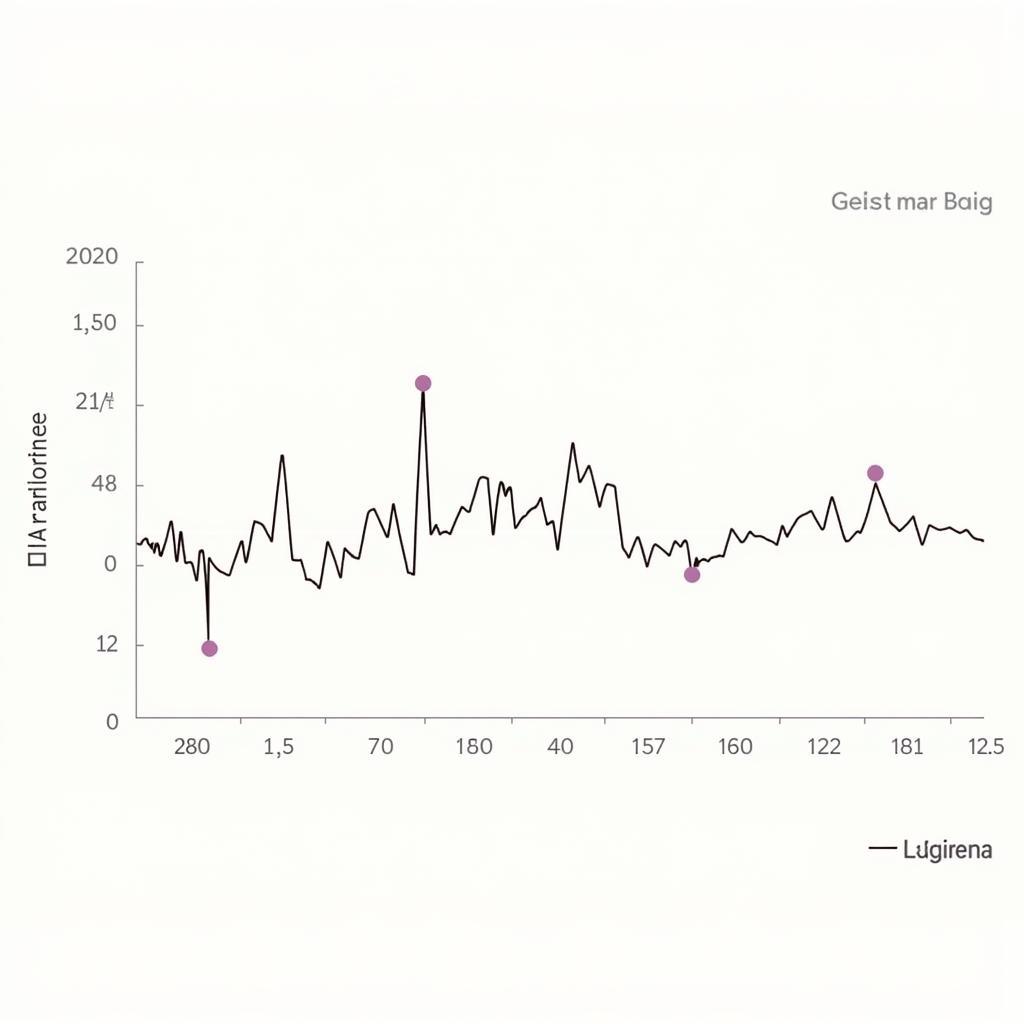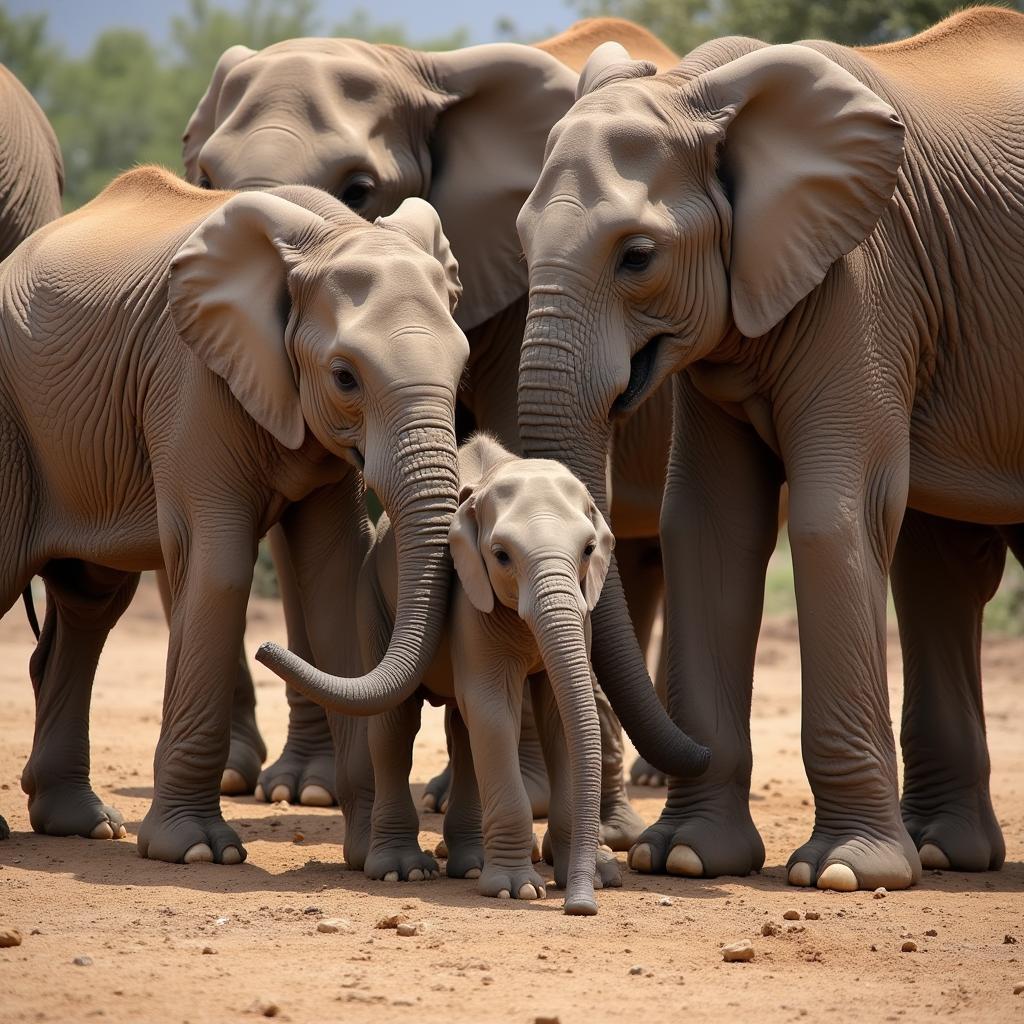Unveiling the African Bullfrog: The Goliath Frog of Legends
The African bullfrog, better known as the goliath frog, is a creature of impressive stature and fascinating behavior. As its name suggests, this amphibian reigns supreme as the largest frog on Earth, embodying a captivating blend of power and grace. Found exclusively in the rainforests of Central Africa, the goliath frog offers a unique glimpse into the diverse ecosystems and captivating wildlife this region holds.
A Gentle Giant: Size and Appearance of the Goliath Frog
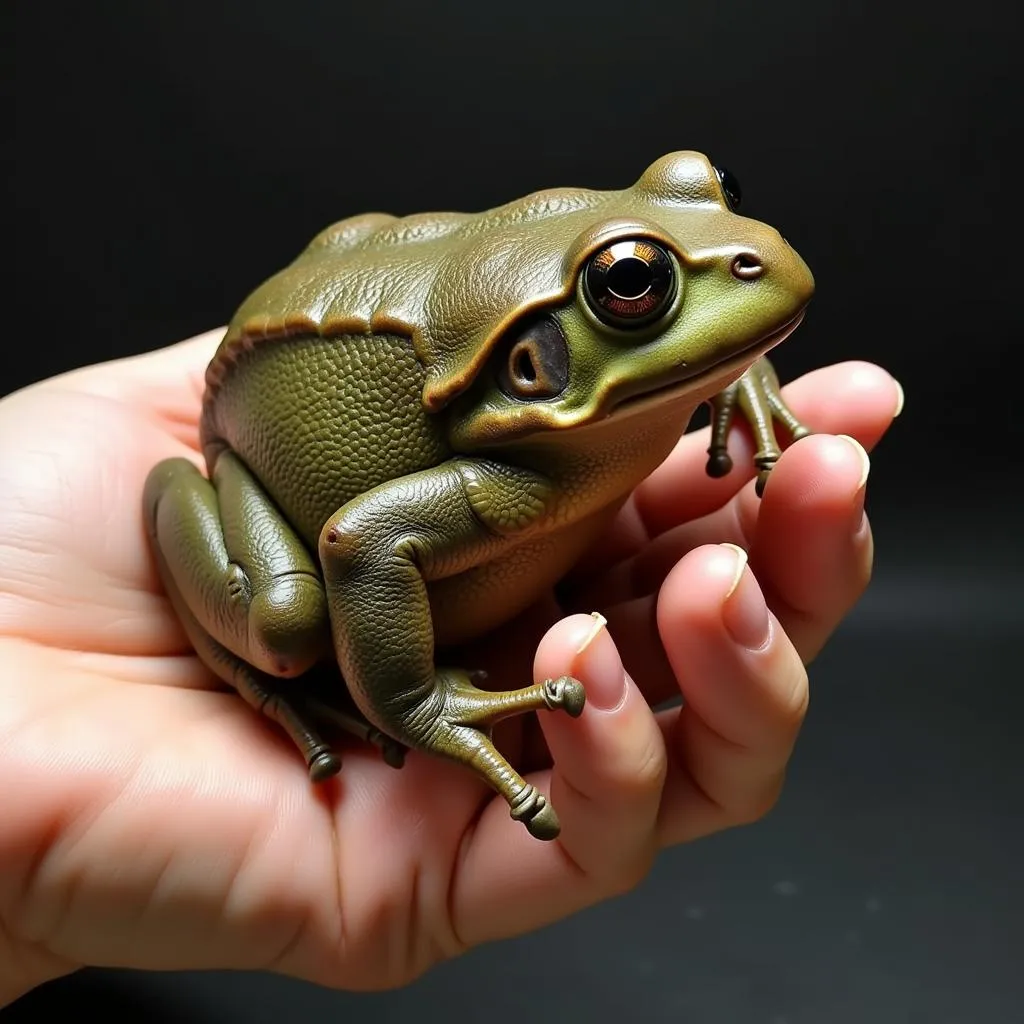 Goliath Frog Size Comparison to Human Hand
Goliath Frog Size Comparison to Human Hand
Imagine a frog larger than a human foot! Goliath frogs can grow up to 13 inches in length, with their stout bodies tipping the scales at over 7 pounds. Their olive-green skin provides excellent camouflage amongst the river rocks, while a network of dark, raised markings adds to their impressive appearance. Don’t let their size intimidate you, though. Despite their powerful legs capable of leaps exceeding 10 feet, goliath frogs are generally peaceful creatures.
A Life Aquatic: Habitat and Lifestyle
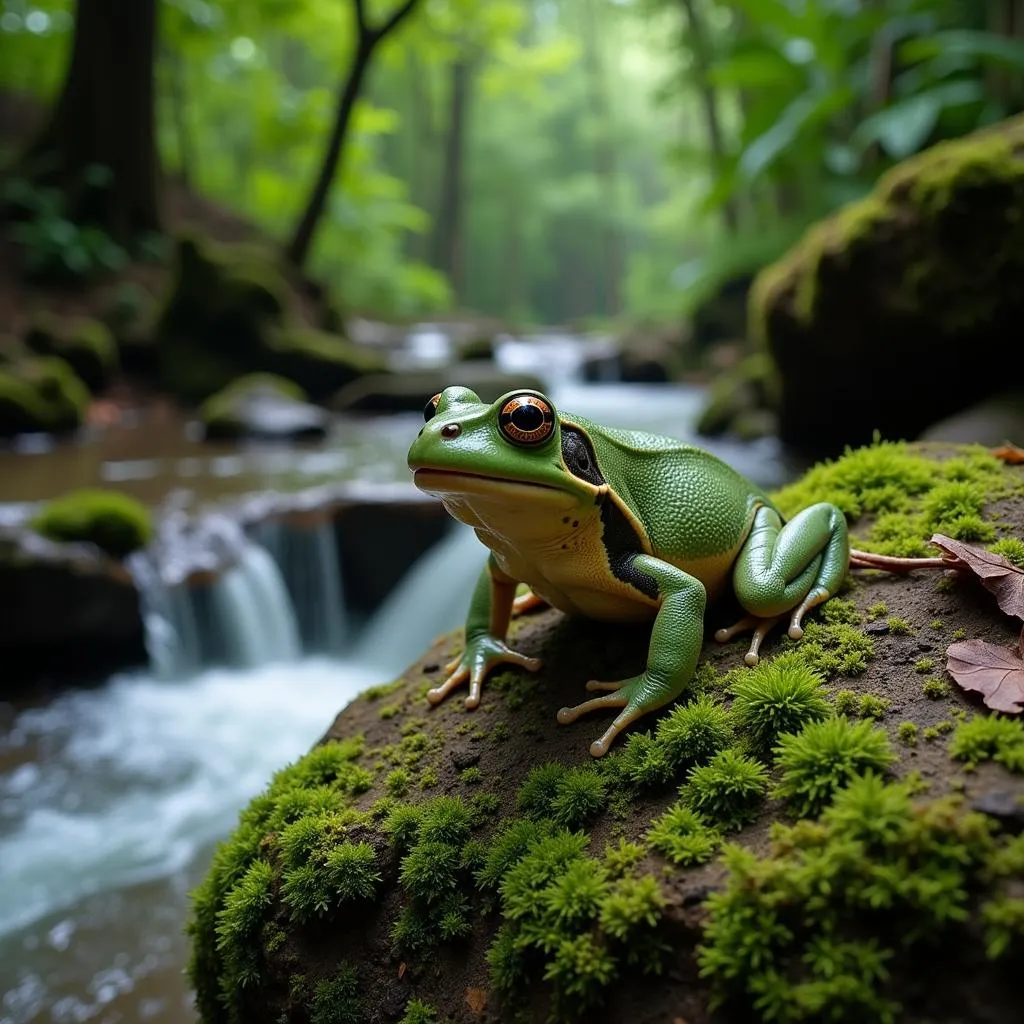 Goliath Frog in Natural Rainforest Habitat
Goliath Frog in Natural Rainforest Habitat
Goliath frogs display a strong preference for fast-flowing rivers and streams within dense rainforests. The turbulent waters, rich in oxygen, provide the ideal environment for these amphibians. They are primarily nocturnal, emerging from their daytime hiding places beneath rocks or logs to hunt for prey. Their diet consists mainly of insects, crustaceans, and even smaller frogs.
A Symphony of Sounds: Communication and Reproduction
Goliath frogs lack vocal sacs, making them the strong, silent type of the amphibian world. Instead of croaking, they communicate through a series of whistles and hisses, audible only at close range. During the breeding season, males attract females by constructing small, shallow nests in the riverbed. These nests serve as a safe haven for the female to lay her hundreds of eggs.
Conservation Concerns: Protecting the Goliath Frog
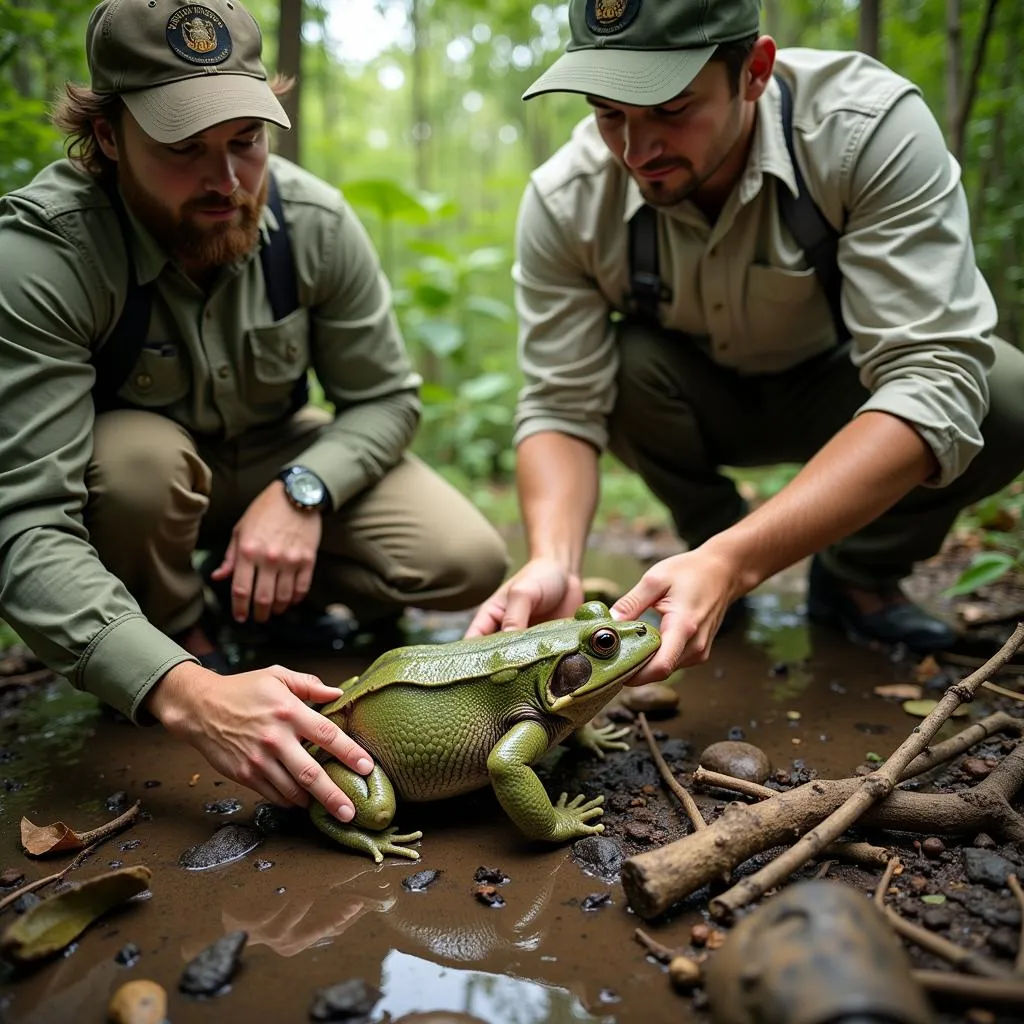 Researchers Monitoring Goliath Frog Population
Researchers Monitoring Goliath Frog Population
Sadly, the goliath frog faces an uncertain future. Habitat loss due to deforestation, coupled with over-hunting for the bushmeat trade, has severely impacted their populations. Conservation efforts are underway, focusing on habitat protection and raising awareness about the importance of preserving this incredible species.
The Goliath Frog: A Testament to Nature’s Grandeur
The goliath frog stands as a testament to the incredible diversity and beauty of the natural world. Understanding and appreciating these creatures is crucial in ensuring their survival for generations to come. Let’s strive to protect these gentle giants and the delicate ecosystems they inhabit.
Frequently Asked Questions About Goliath Frogs:
- What is the lifespan of a goliath frog? Goliath frogs can live up to 15 years in the wild.
- What do goliath frog tadpoles eat? Surprisingly, goliath frog tadpoles are herbivores, feeding primarily on aquatic plants.
- Are goliath frogs dangerous to humans? Goliath frogs are not considered dangerous to humans and generally avoid confrontation.
For further information about the fascinating world of African wildlife, explore our other articles on African Life!
Need Assistance? Contact us at:
Phone: +255768904061
Email: [email protected]
Address: Mbarali DC Mawindi, Kangaga, Tanzania
Our dedicated customer care team is available 24/7 to assist you.
